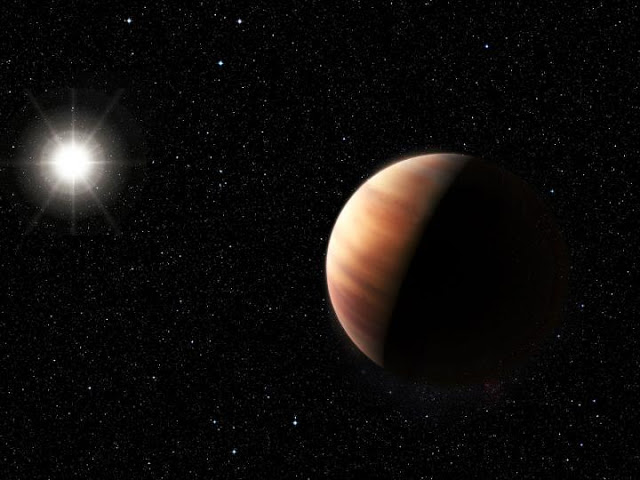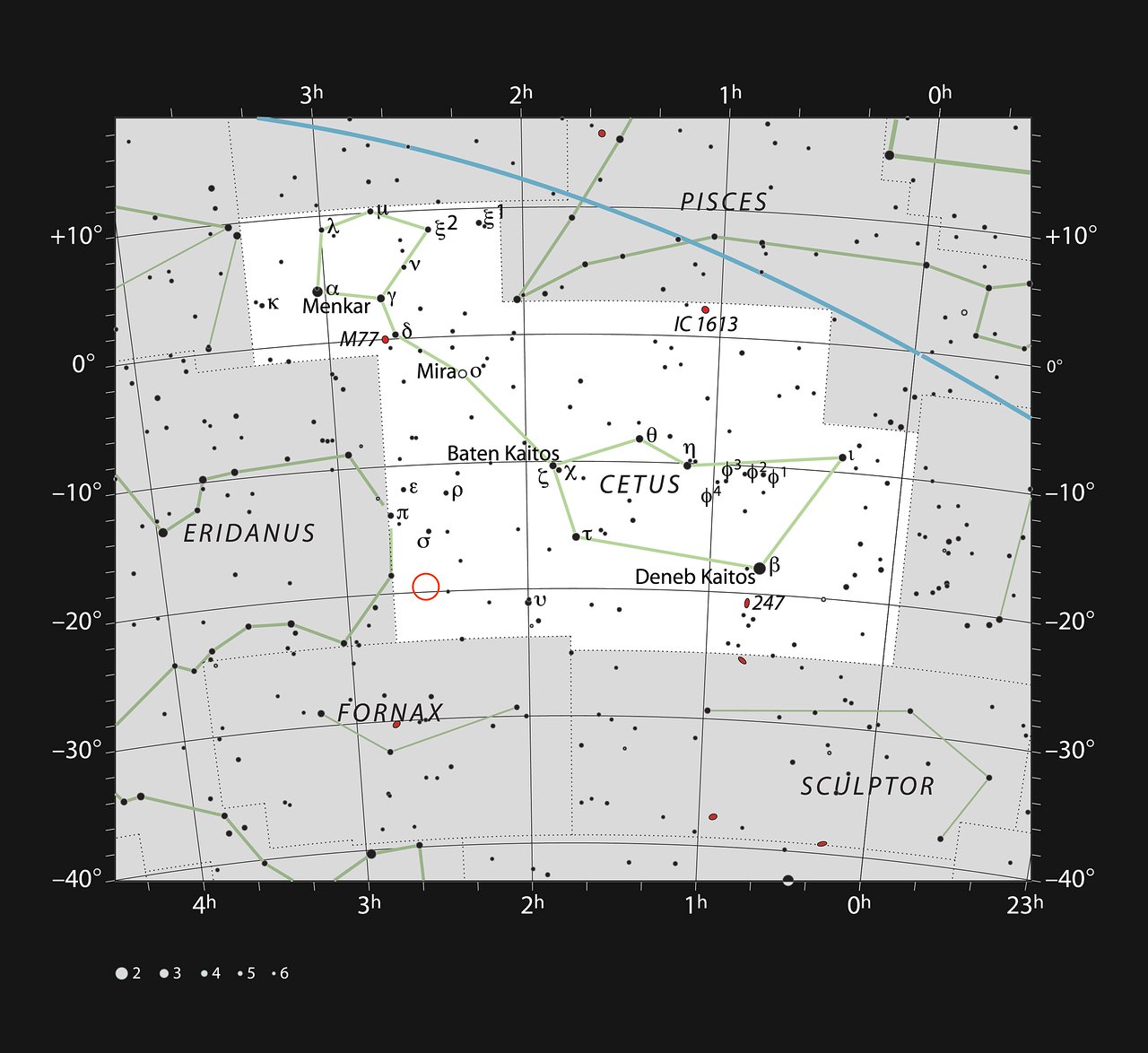| Online: | |
| Visits: | |
| Stories: |

| Story Views | |
| Now: | |
| Last Hour: | |
| Last 24 Hours: | |
| Total: | |
Jupiter Twin Discovered Around Solar Twin
So far, exoplanet surveys have been most sensitive to planetary systems that are populated in their inner regions by massive planets, down to a few times the mass of the Earth [1]. This contrasts with our Solar System, where there are small rocky planets in the inner regions and gas giants like Jupiter farther out.
This is an artist’s impression showing a newly discovered Jupiter twin gas giant orbiting the solar twin star, HIP 11915. The planet is of a very similar mass to Jupiter and orbits at the same distance from its star as Jupiter does from the Sun. This, together with HIP 11915′s Sun-like composition, hints at the possibility of the system of planets orbiting HIP 11915 bearing a resemblance to our own Solar System, with smaller rocky planets orbiting closer to the host star.

Credit: ESO/M. Kornmesser
A Brazilian-led team has been targeting Sun-like stars in a bid to find planetary systems similar to our Solar System. The team has now uncovered a planet with a very similar mass to Jupiter [2], orbiting a Sun-like star, HIP 11915, at almost exactly the same distance as Jupiter. The new discovery was made using HARPS, one of the world’s most precise planet-hunting instruments, mounted on the ESO 3.6-metre telescope at the La Silla Observatory in Chile.
An artist’s impression showing a newly discovered Jupiter twin gas giant orbiting the solar twin star, HIP 11915. The planet is of a very similar mass to Jupiter and orbits at the same distance from its star as Jupiter does from the Sun. This, together with HIP 11915’s Sun-like composition, hints at the possibility of the system of planets orbiting HIP 11915 bearing a resemblance to our own Solar System, with smaller rocky planets orbiting closer to the host star.
Credit: ESO/M. Kornmesser
Although many planets similar to Jupiter have been found [3] at a variety of distances from Sun-like stars, this newly discovered planet, in terms of both mass and distance from its host star, and in terms of the similarity between the host star and our Sun, is the most accurate analogue yet found for the Sun and Jupiter.
The planet’s host, the solar twin HIP 11915, is not only similar inmass to the Sun, but is also about the same age. To further strengthen the similarities, the composition of the star is similar to the Sun’s. The chemical signature of our Sun may be partly marked by the presence of rocky planets in the Solar System, hinting at the possibility of rocky planets also around HIP 11915.
This chart shows most of the naked eye stars visible in the large but faint constellation of Cetus (The Whale). The location of the star HIP 11915 is marked with a red circle. It is too faint to be seen without optical aid, but can be picked up with binoculars. A Brazilian-led team has found that this solar twin star is orbited by a planet similar in mass and orbit to Jupiter in our own Solar System.

Credit: ESO/IAU and Sky & Telescope
According to Jorge Melendez, of the Universidade de São Paulo, Brazil, the leader of the team and co-author of the paper, “the quest for an Earth 2.0, and for a complete Solar System 2.0, is one of the most exciting endeavors in astronomy. We are thrilled to be part of this cutting-edge research, made possible by the observational facilities provided by ESO.” [4]
Megan Bedell, from the University of Chicago and lead author of the paper, concludes: “After two decades of hunting for exoplanets, we are finally beginning to see long-period gas giant planets similar to those in our own Solar System thanks to the long-term stability of planet hunting instruments like HARPS. This discovery is, in every respect, an exciting sign that other solar systems may be out there waiting to be discovered.”
Follow-up observations are needed to confirm and constrain the finding, but HIP 11915 is one of the most promising candidates so far to host a planetary system similar to our own.
Notes
[1] The current detection techniques are more sensitive to large or massive planets close to their host stars. Small and low-mass planets are mostly beyond our current capabilities. Giant planets that orbit far from their host star are also more difficult to detect. Consequently, many of the exoplanets we currently know are large and/or massive, and close to their stars.
[2] The planet was discovered by measuring the slight wobble it imposes on its host star while orbiting around it. As the inclination of the planet’s orbit is not known, only a lower limit to its mass can be estimated. Note that the activity of the star, which is linked to the variations of its magnetic field, could possibly mimic the signal that is interpreted as the signature of the planet. The astronomers have performed all the known tests to investigate this possibility, but it is currently impossible to completely rule it out.
[3] An example of another Jupiter Twin is the one around HD 154345, described here:http://iopscience.iop.org/1538-4357/683/1/L63/pdf/587461.pdf .
[4] Since the signature of the Brazilian accession agreement in December 2010, Brazilian astronomer have had full access to the ESO observing facilities.
Source:



